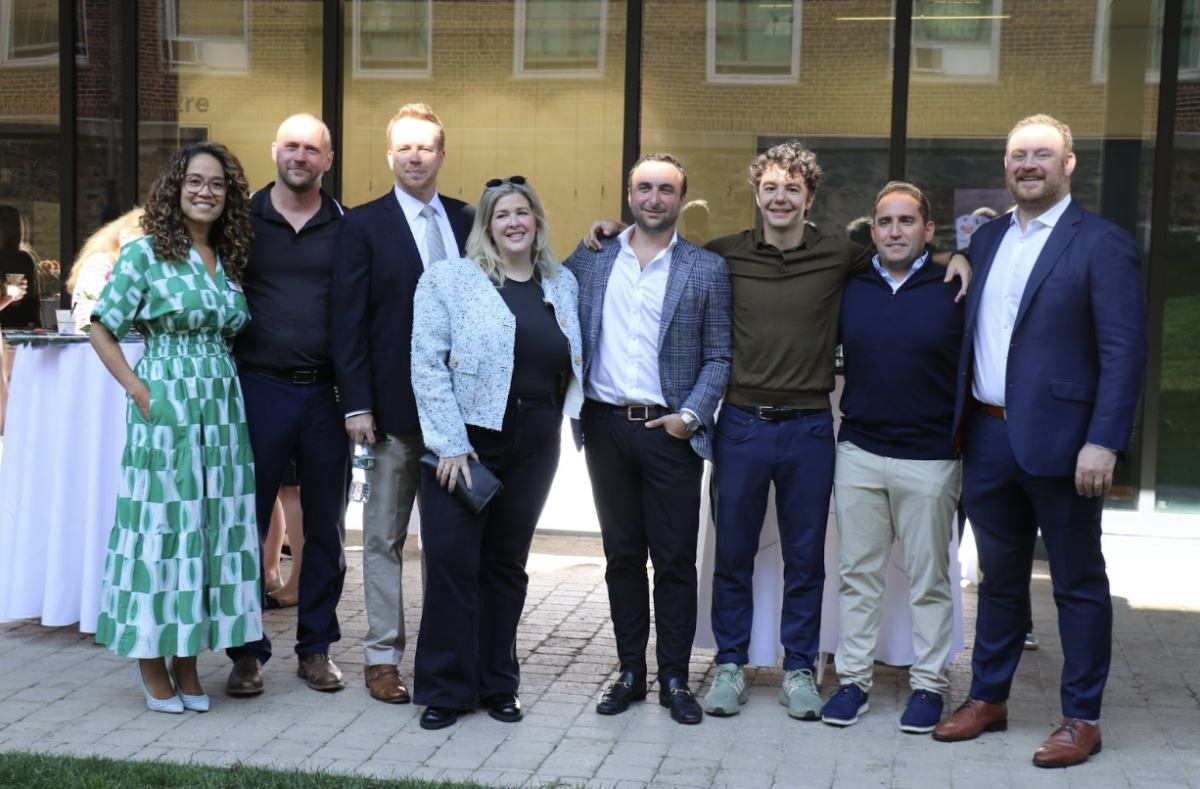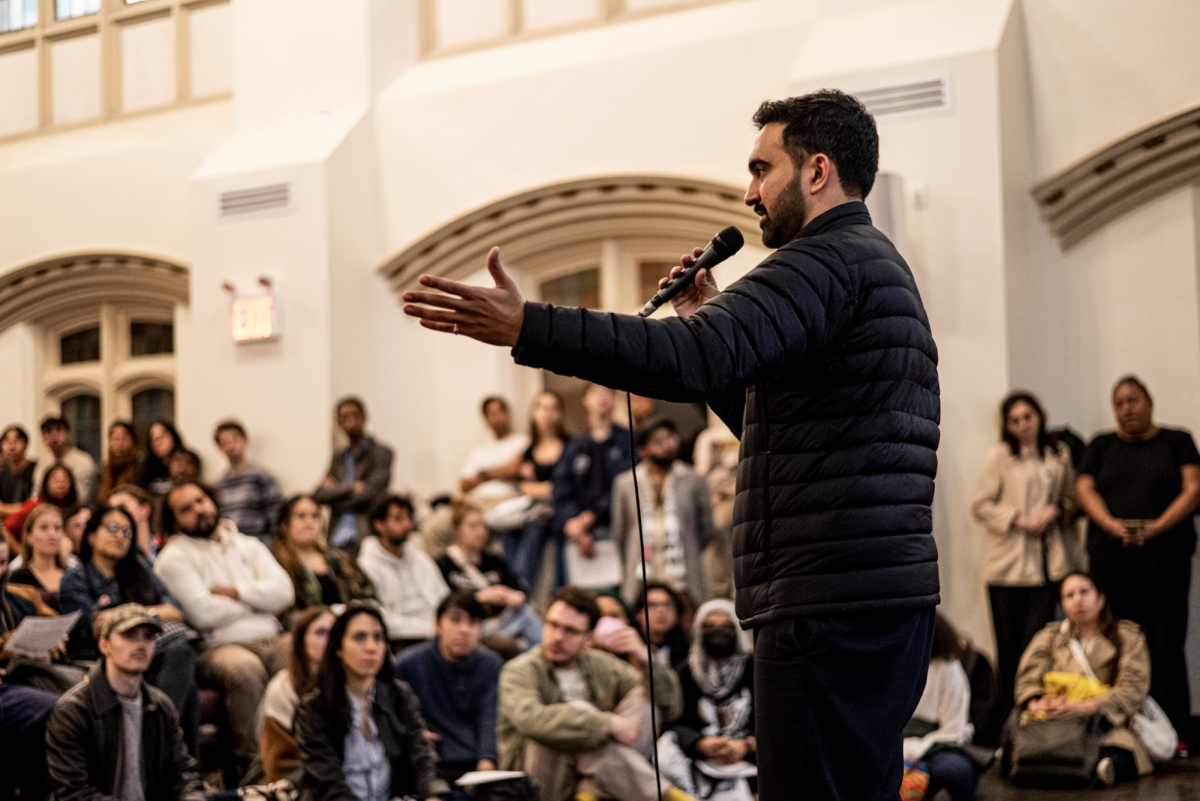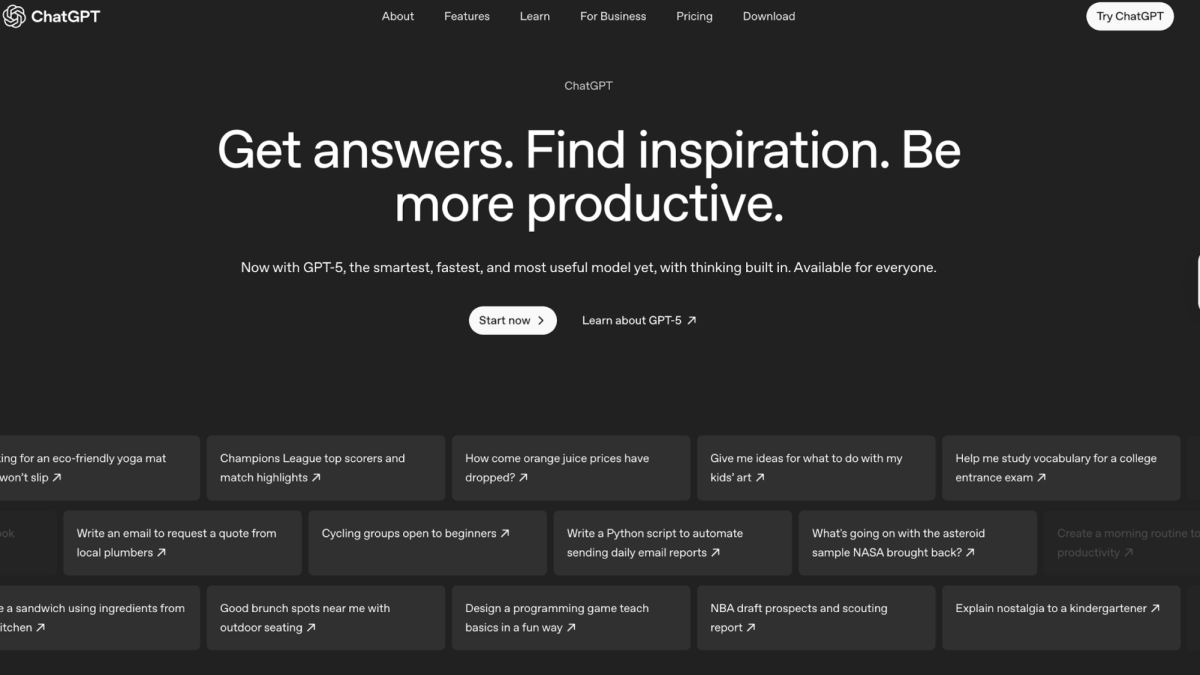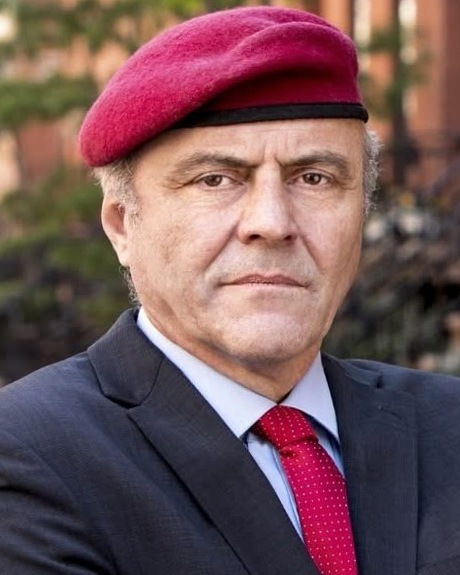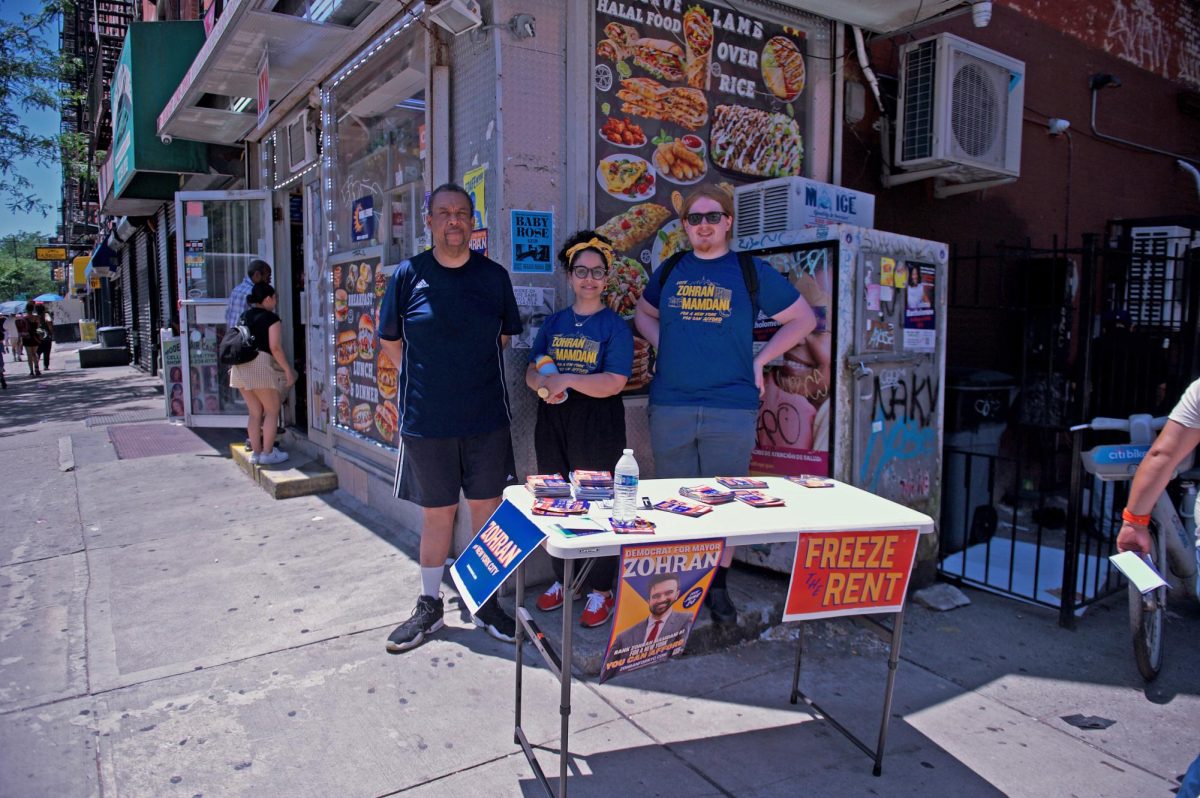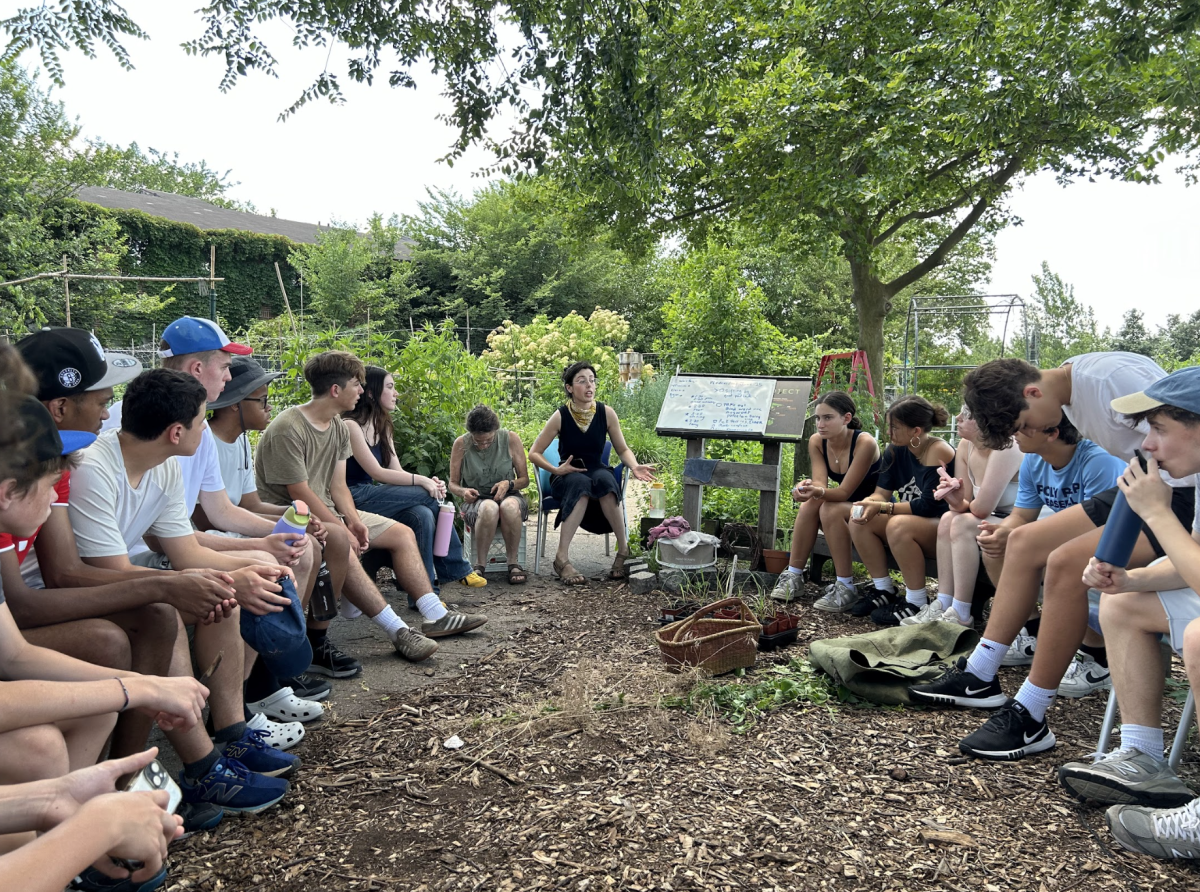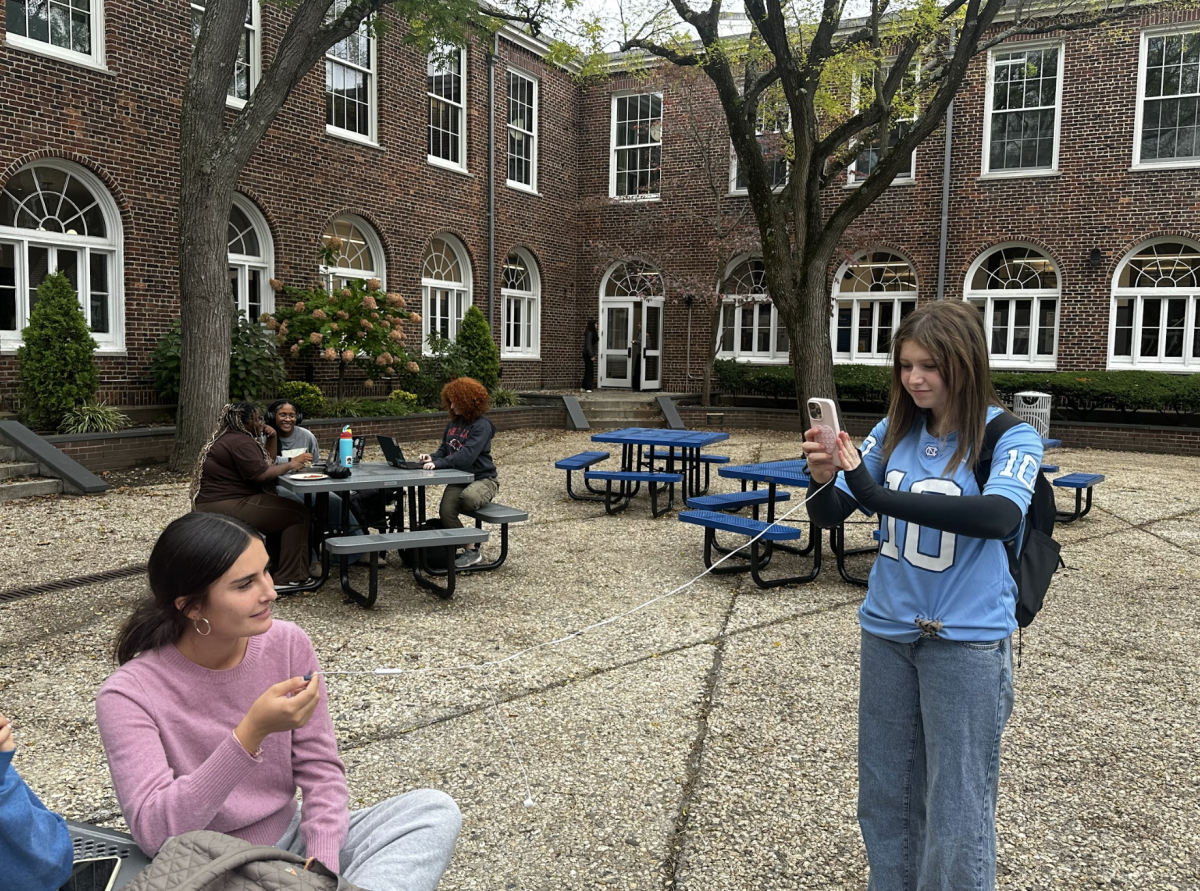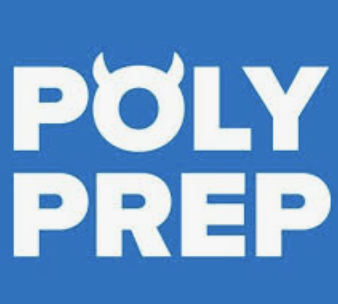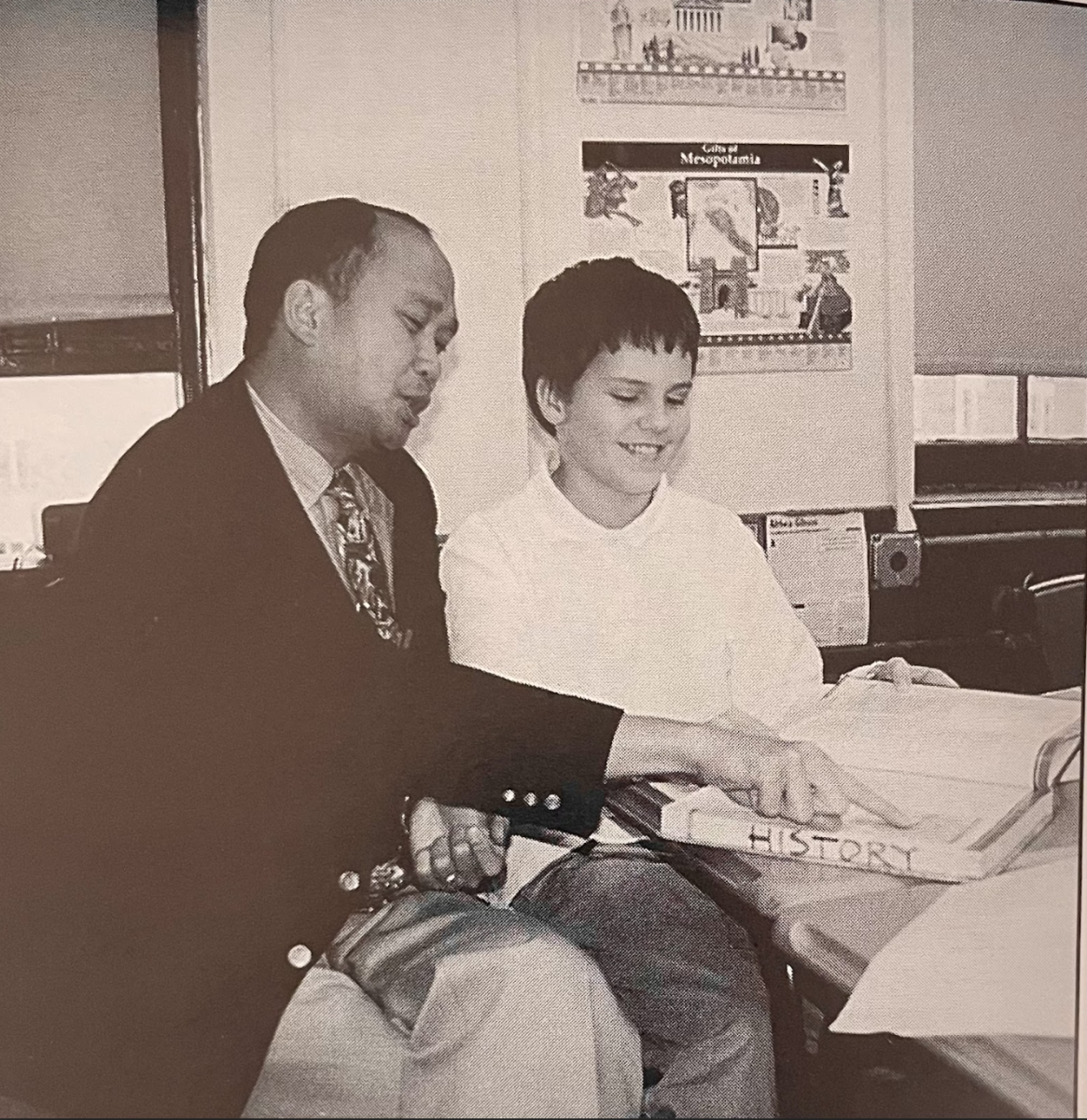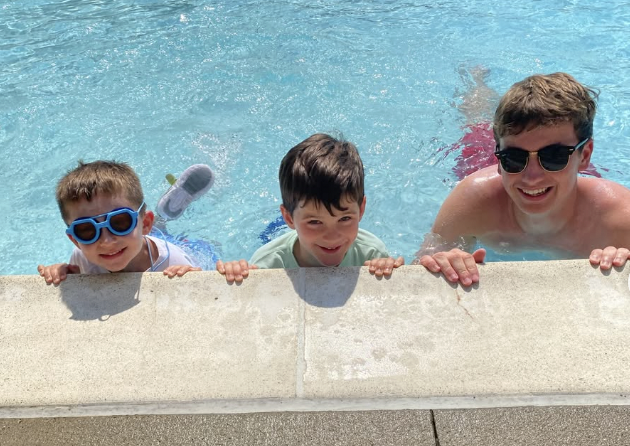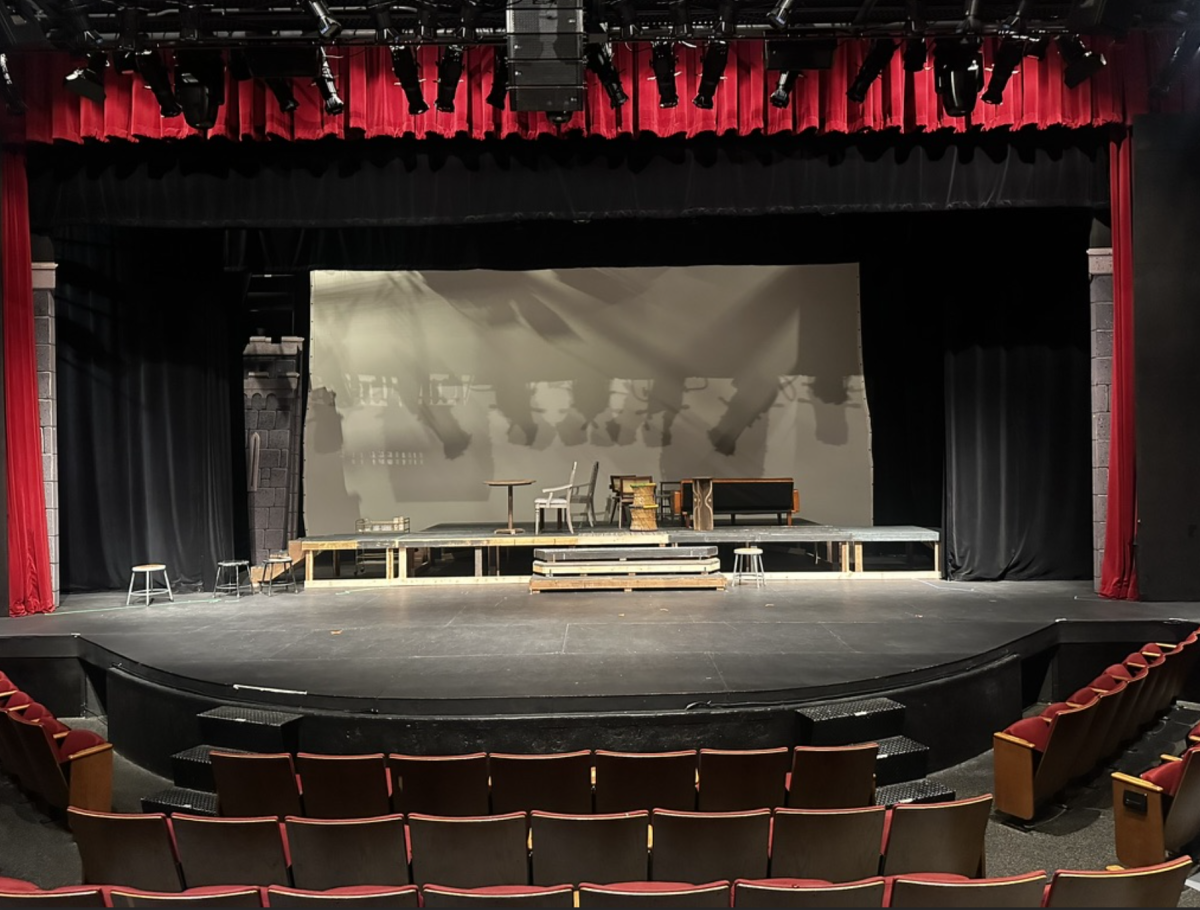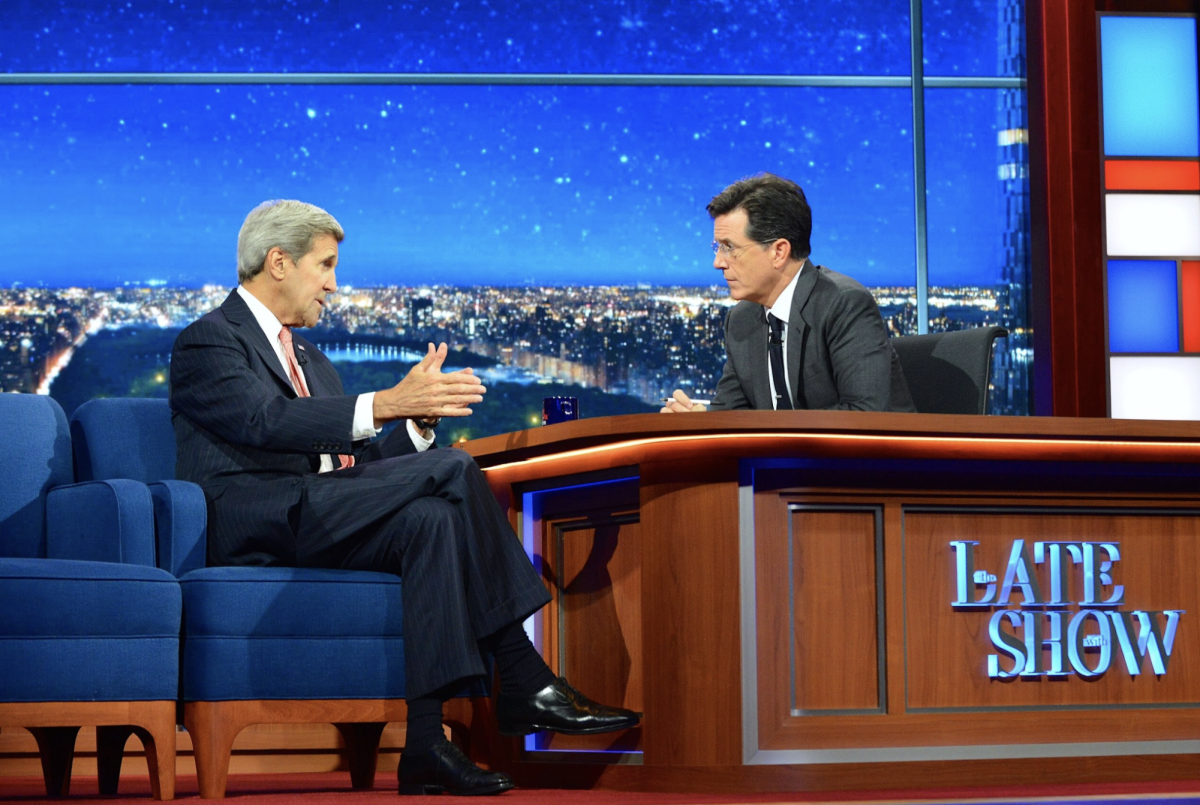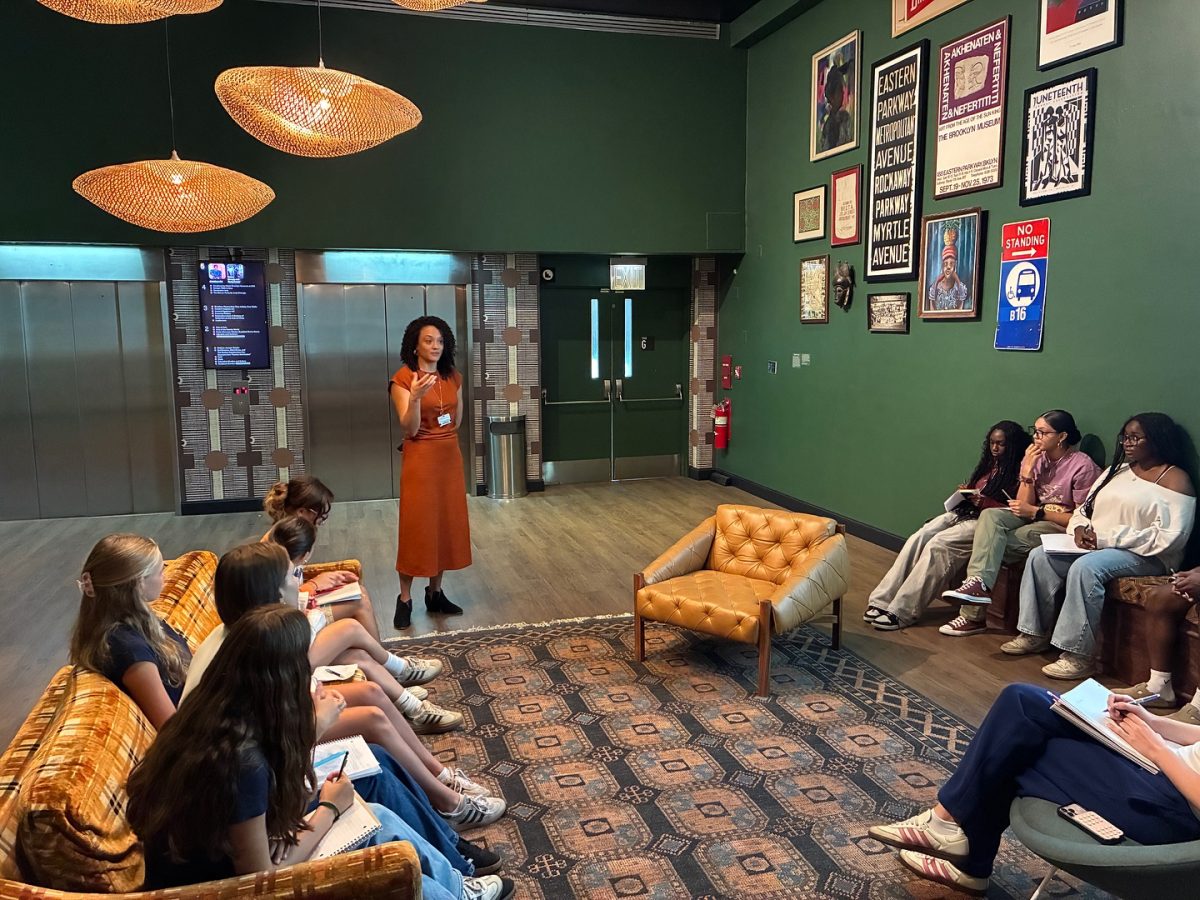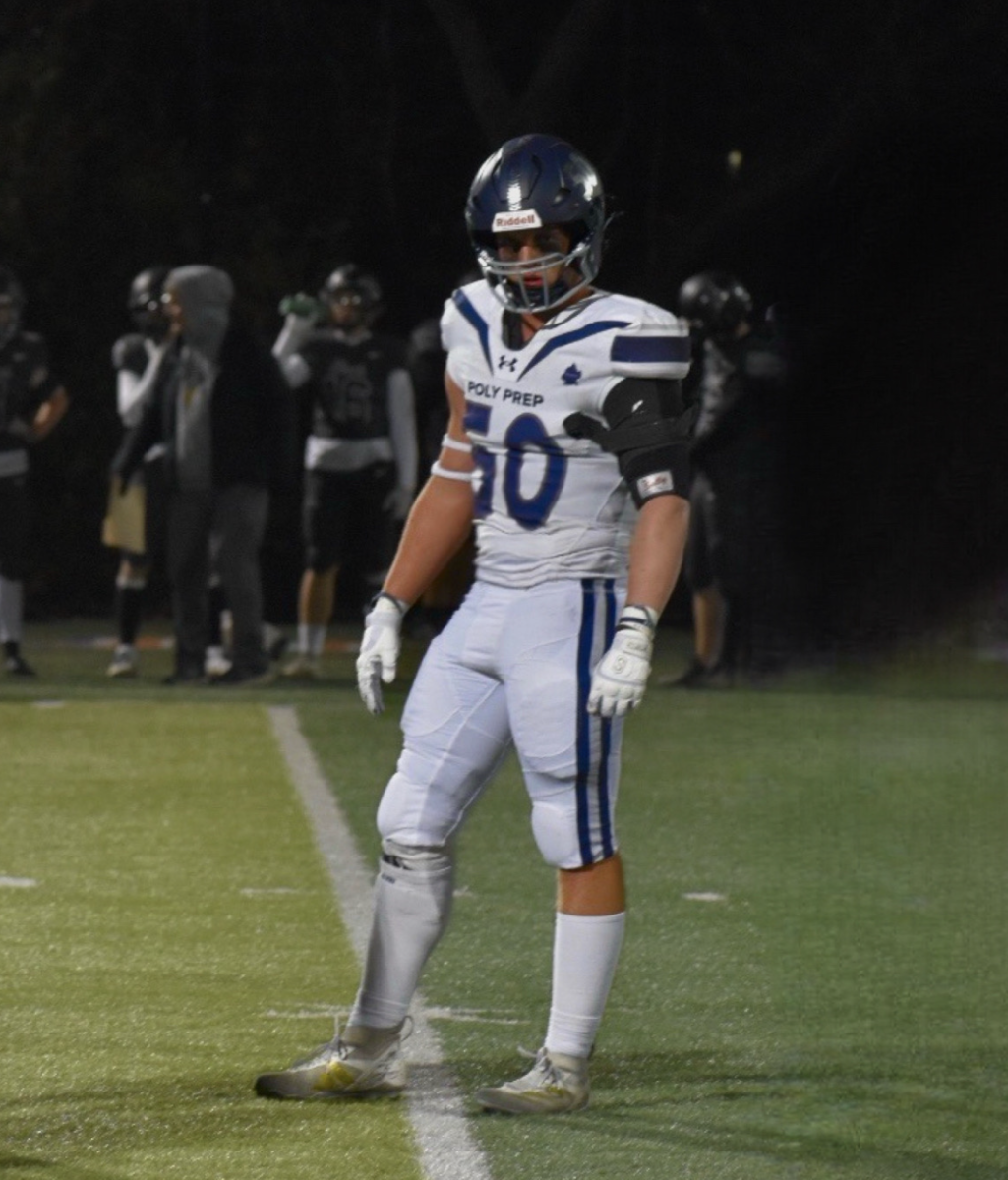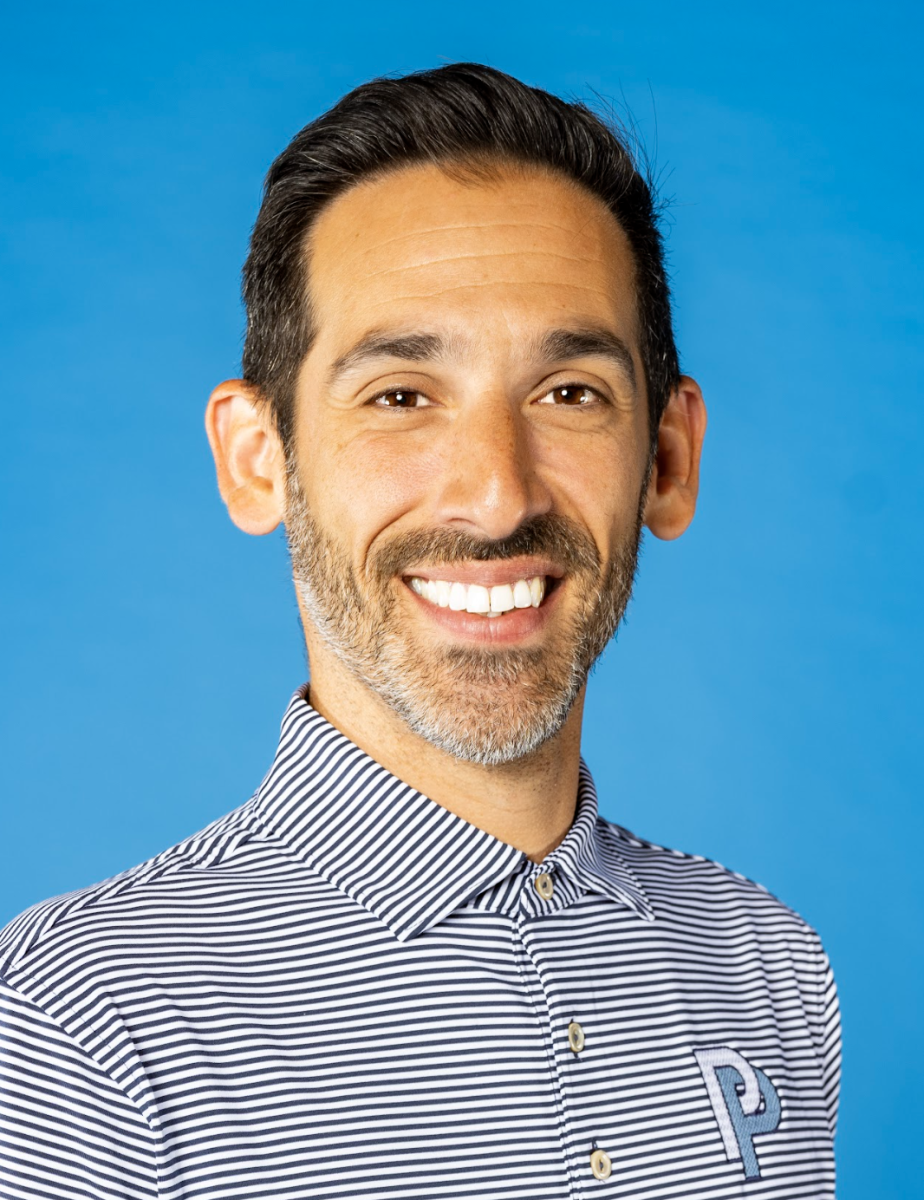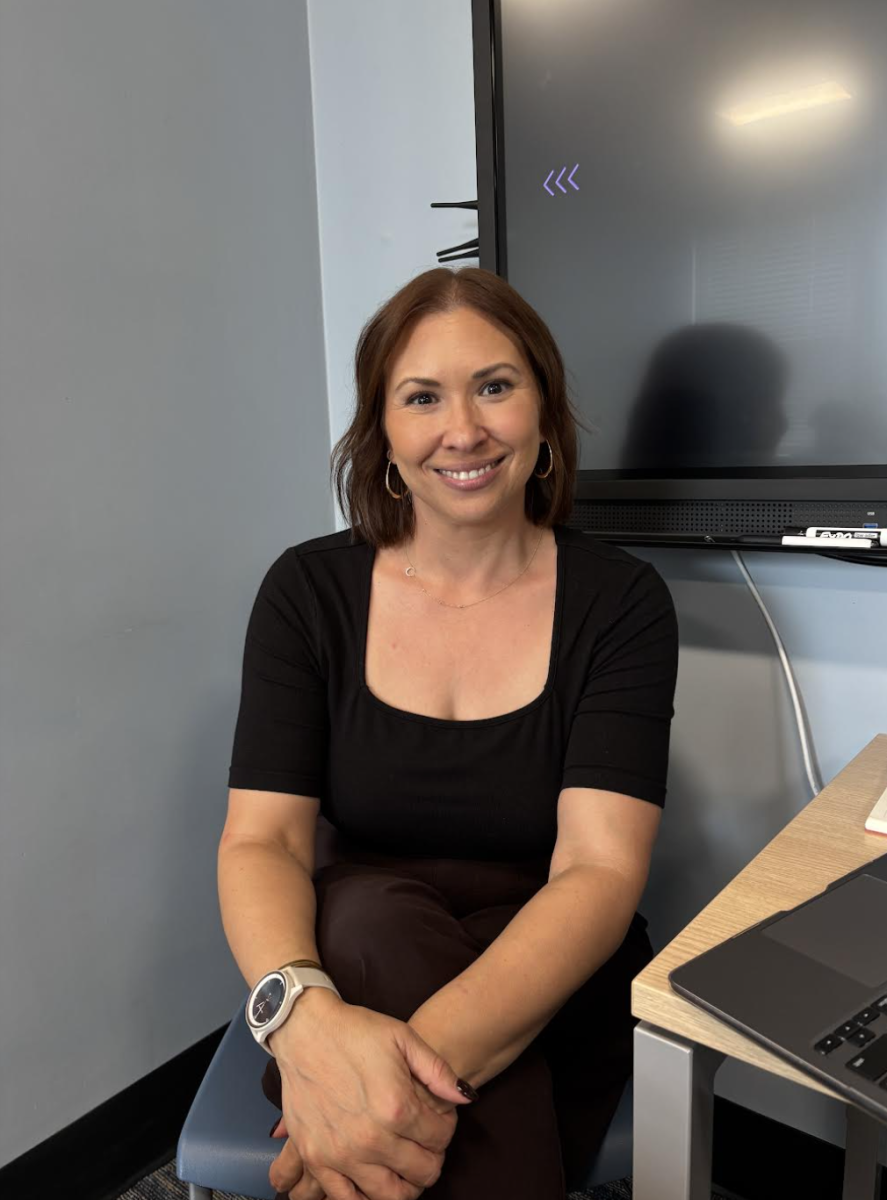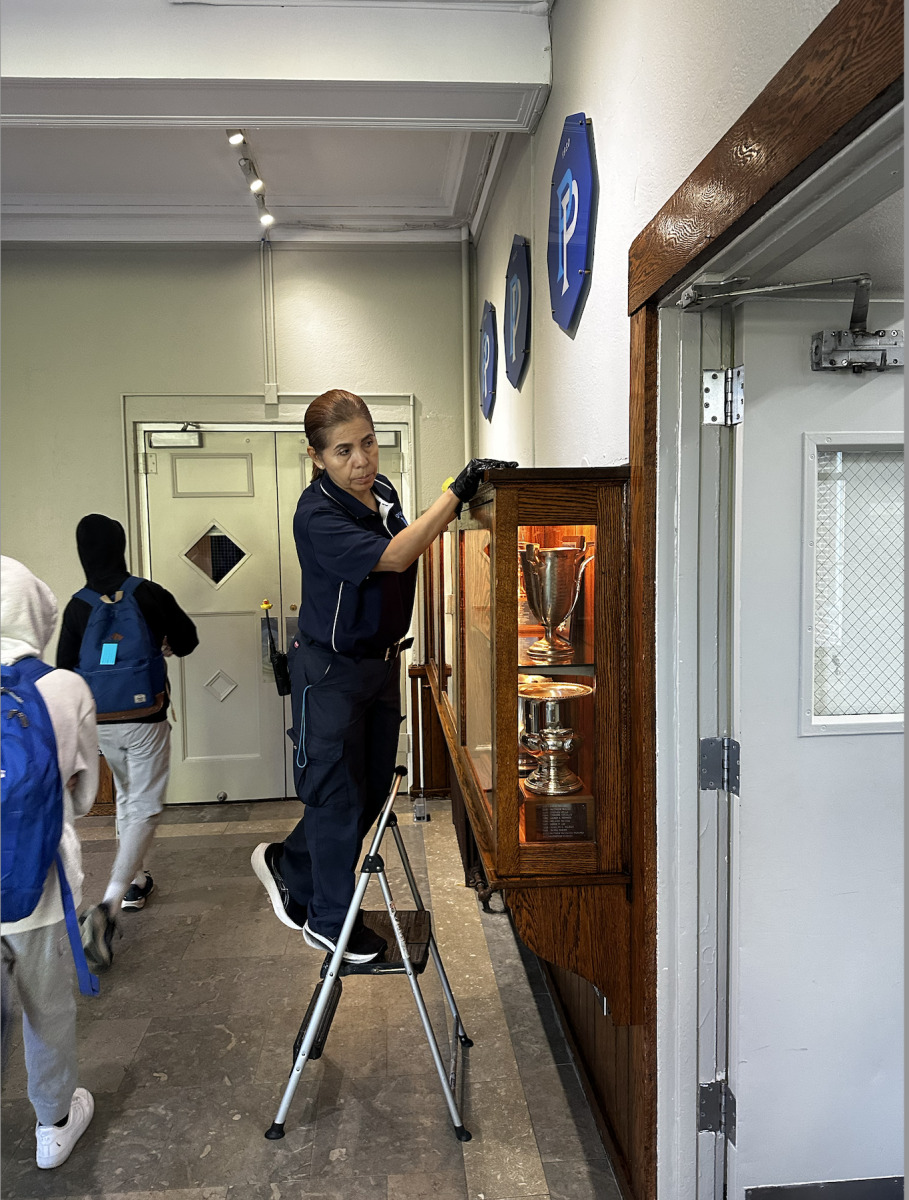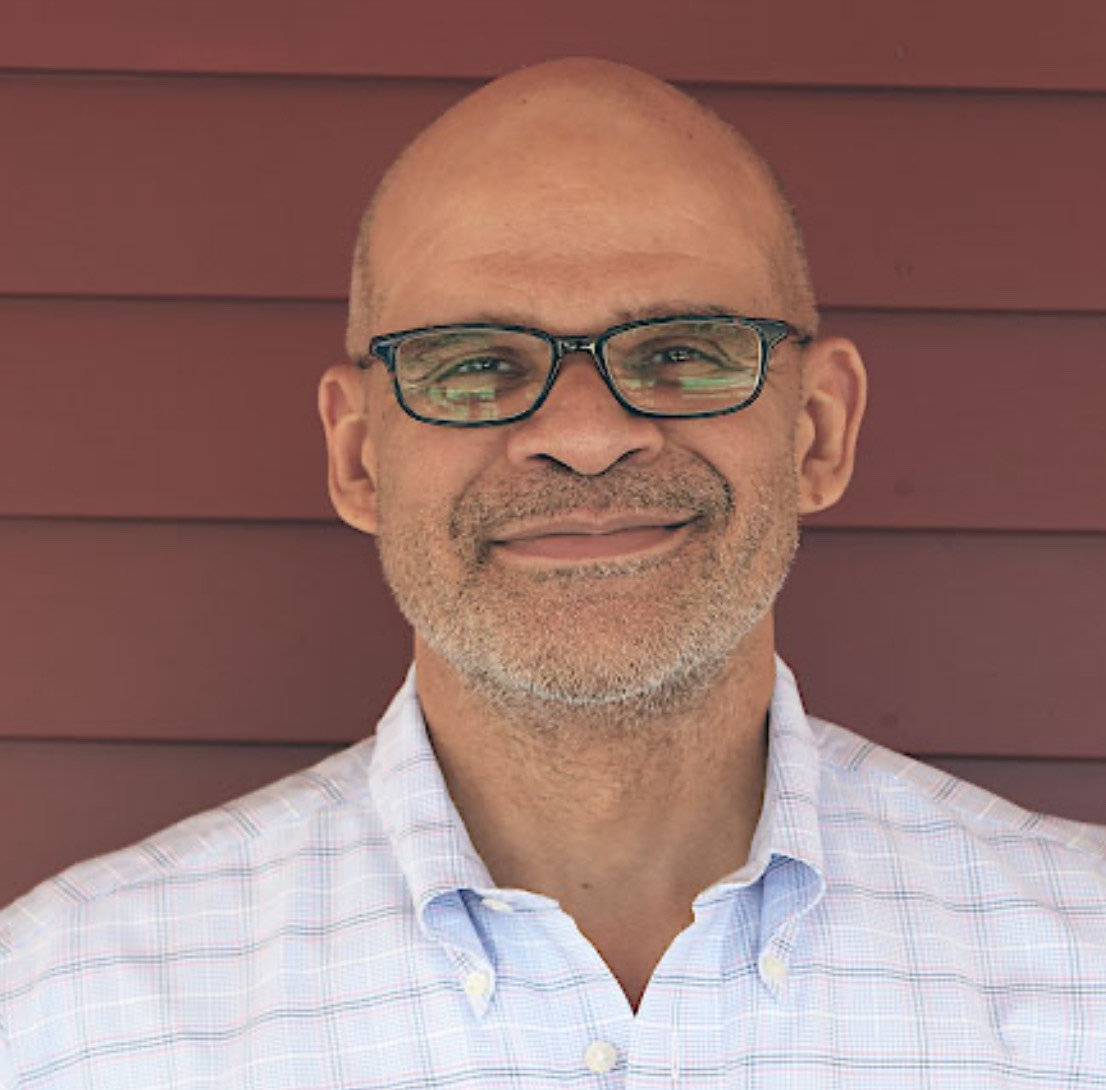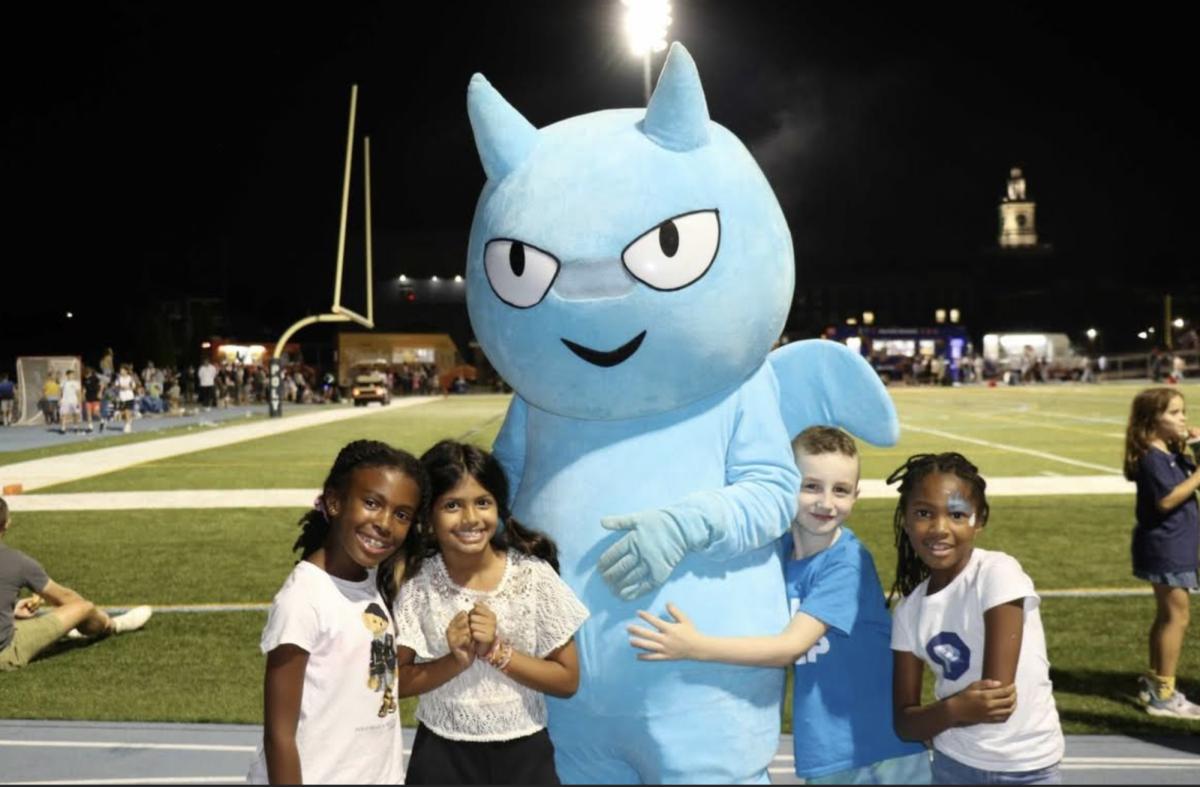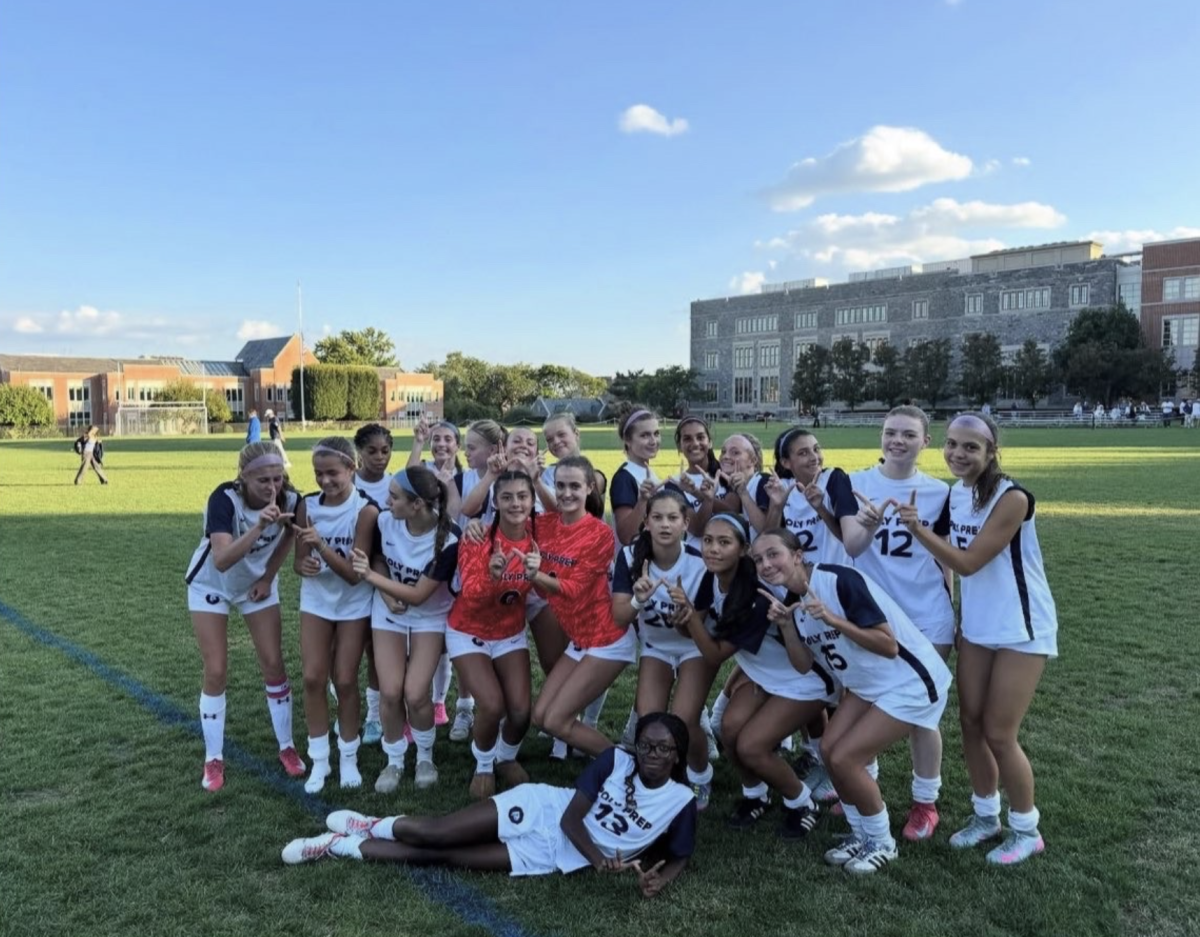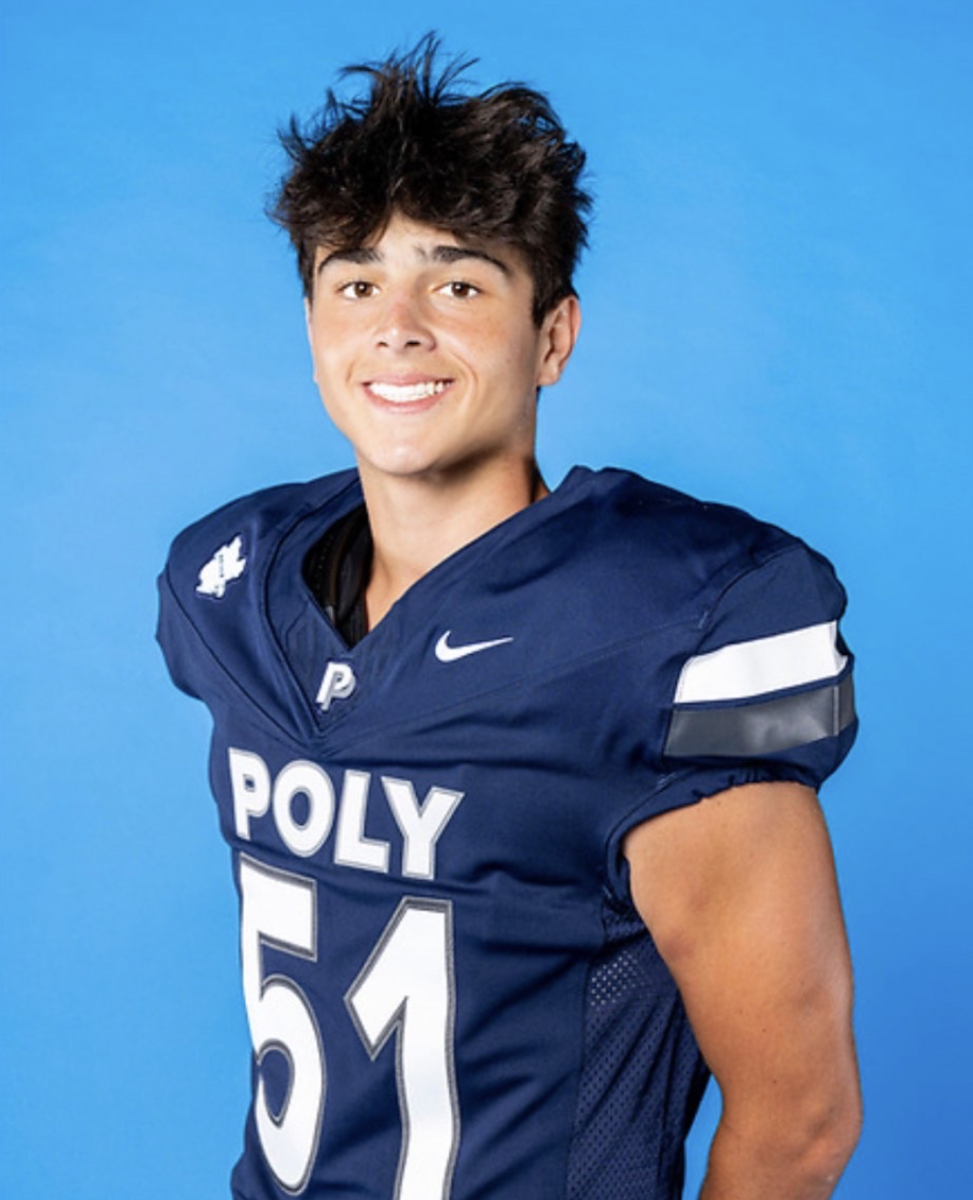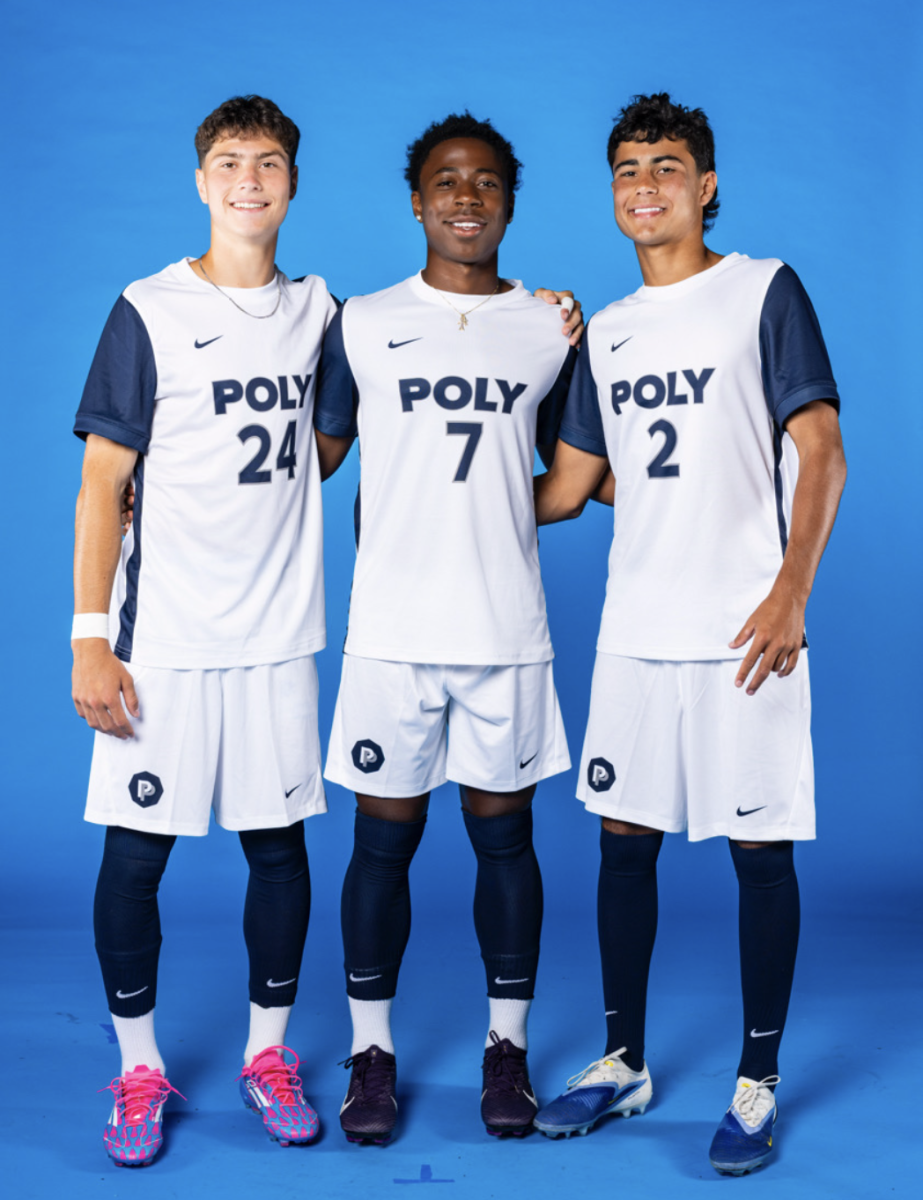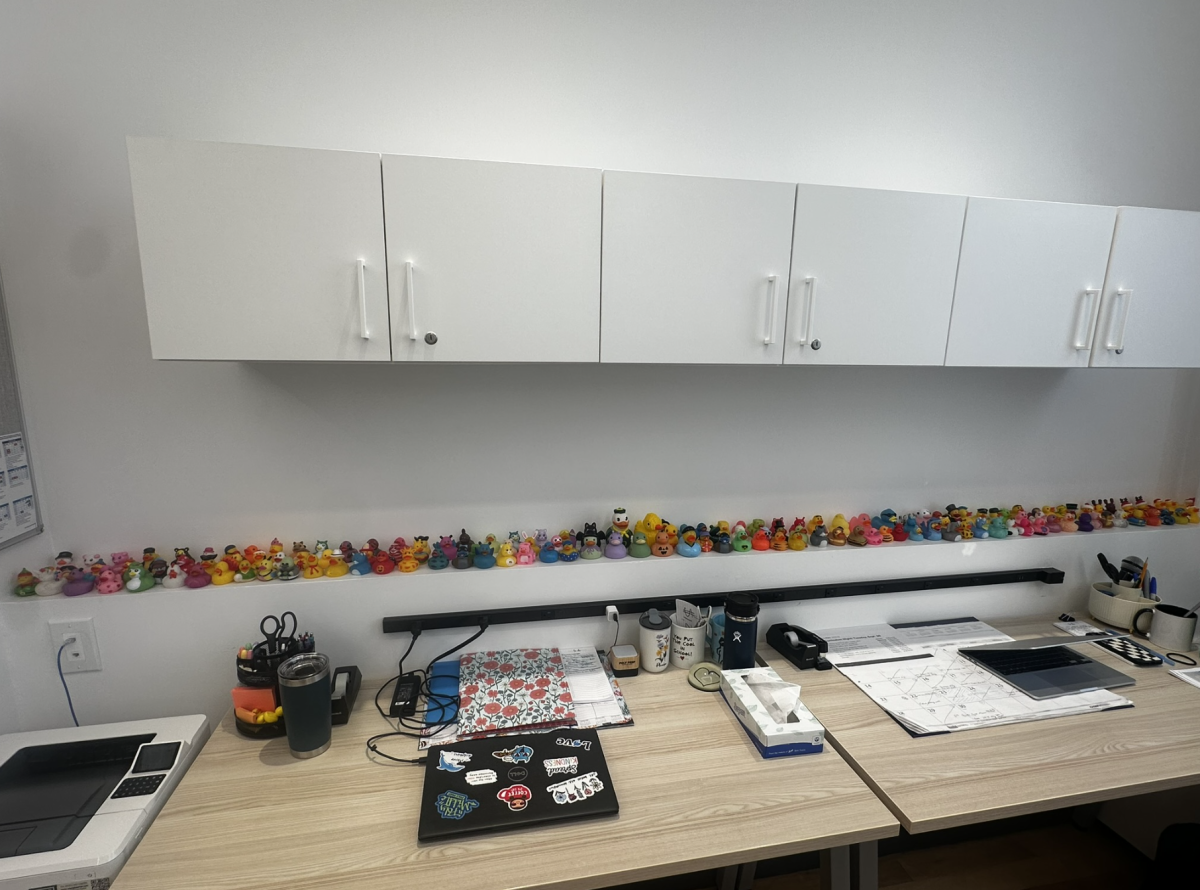The 2010s: Diversity at Poly Takes on New Beginnings
Diversity at Poly wasn’t always something that was paid or even an official title. However, according to the National Association of Independent Schools (NAIS) 2023-2024 State of Independent School Diversity Practice, “In 2019, 54% of diversity practitioners were full-time; in 2023, the percentage had risen to 75%.”
Khan started at Poly in 1996 after being hired as an English teacher under the Wireless Reader’s Digest Fund, which paid and recruited teachers of color (the fund eventually dissolved in the early 2000s after the last of the Reader’s Digest stock was sold). At that point, Taubman left the school in the spring of that year, and Mahabir stepped up to lead diversity work at both Poly and the Center for Teaching and Diversity.
“He was doing a lot of diversity-related things for the school, but we didn’t have a [official] director diversity at that time,” Khan explained.
Just as there was no designated block carved during the day for diversity work, there was no title dedicated solely to diversity at the school either. Though he possessed the title of Diversity Coordinator, Mahabir was still balancing teaching English classes while pursuing diversity work up until he departed from the school, leaving the diversity oversight space at Poly empty.
“Before, it was always something that somebody had to do on the side. It was like, okay, you have your regular teaching job, and also, by the way, can you do this? …The idea of having an enormous responsibility [overseeing diversity] on top of your teaching seems like it’s too much,” Rearick said.
Khan left Poly in 2000 to pursue other professional ventures but would find himself back at the school in 2010 after encountering Rankin at a job fair searching for candidates of color. It just so happened that Poly was at its ten-year accreditation review and was in need of a Director of Diversity. According to the Accreditation Board for Engineering and Technology, Inc. (ABET), accreditation is a review process used to determine if educational programs meet defined standards of quality. In the United States, this process is voluntary. Once achieved, accreditation is renewed periodically to maintain the quality of the educational programs.
“You have to present all of your growth over the last ten years and say, ‘These are the things we
want you to measure.’ Then, an accreditation team comes in and sees how well you’re
doing those things, Khan explained. “Their [the accreditation team] job was to work on what you’ve presented – that’s important because Poly got what’s called dinged for not having the director of diversity.”
When Rankin sat down with Khan, he explained that Poly had always been very eager to have an official director of diversity, but the position was looming.
“Poly has always been really forward on diversity, in terms of thinking, but also in terms of
recruitment of kids of color and faculty. I mean, this [position] is a great example of that,” Khan said.
After going through the process of interviewing and meeting with students and families, Khan was given the Director of Diversity role in the spring of 2010 and began working on July 1.
Since it was the first time that Poly had someone working in a diversity role of such a large capacity, Khan found that he had ample flexibility and fluidity when it came to doing his job.
Khan said of Harman, who was still the Head of School and his supervisor at the time: “He was the type of person who allows you to find your own way and build a position as you saw fit.” Khan explained.
Because it was an administrative position, Khan had access to everything – Harman even described his role as being somewhat of a “watchdog.” Khan attended board meetings, Lower School faculty meetings, and Upper and Middle Division faculty meetings to ensure that he was involved in the school in any capacity he could. He also partnered closely with other administrative colleagues, such as working with former Head of Upper School Bud Cox to plan assemblies together.
“I was in the Middle and the Upper School, floating around, you know, trying to be everywhere, ” Khan said. “It was a big role that I was defining. Everyone has tried to kind of figure out what works for them. What do the community and school need at this moment? And certainly, I was given a large kind of breadth to do what I thought I saw fit,” he elaborated.
Typically, according to Chun’s dissertation, diversity officials welcome and retain students and faculty from diverse backgrounds, act as a resource for faculty and staff in providing academic, emotional, and social support for students/families of diverse backgrounds, work with the division heads to ensure that the school’s curriculum reflects the diversity of local and global communities. They also coordinate programs for educating the school community (faculty, staff, students, and parents) about issues related to diversity.
Over the course of Khan’s tenure as Director of Diversity, several changes were made to the school’s diversity programming and initiatives. Though affinity groups had already been established, Khan worked on expanding them to have more students. “We [also] expanded those affinity groups [to] the Middle and the Lower School.” Much of Khan’s work consisted of furthering diversity programming in the Upper School while making sure to conduct diversity outreach geared more towards younger students and early admissions.
“There was a time, for example, when we watched the trends in New York City schools. When I went to school, a lot of diversity was focused on high school. In my last year, I led affinity groups with lower school students. We had a campaign for Lower School diversity,” Khan said.
“We talked a lot about how unhealthy that experience was for kids, you know, to have that lack of diversity. And so we made a push. The campaign for Lower School diversity was actually a brainchild of myself working with Larry Donovan, the Head of Lower School, and with really active parents at that time,” he added
Other efforts included increasing financial aid for families within the school’s lower grades. In the Lower School specifically, “the only people who got aid in the beginning were faculty’s children.
We expanded that to families who were applying for aid, and we saw much more diversity increase there. Then, we expanded it to even nursery,” Khan said.
“There were a lot of moving parts. We really wanted it [diversity] done on every level,” Khan said.
By the time Khan departed from the school in 2015, he explained that he had people in each age division (Lower, Middle, and Upper School) serving as Diversity Coordinators, overseeing them as they worked on diversifying their curriculum. The school also established a subcommittee on diversity within the Board.
Khan credits the blossoming of diversity at Poly during the 2010s to the school’s flexibility. “One of the testaments to Poly having [diversity] is being willing to try things, to say ‘let’s see if this works. I was always very appreciative of that,” Khan said.
When Khan left Poly in 2015, the school continued to have a string of Directors of Diversity: Josina Reaves, who started as an English teacher at Poly in 2008, took on Khan’s role from 2015-2018, followed briefly by Motoko Maeagawa from 2018 to 2020, after which there was a two-year gap in the position.
Despite having an inconsistent Director of Diversity over the years, students continued to serve as strong advocates for diversity at the school. Lemonade, Poly’s Black Girl Affinity Group, was founded in 2018 by Lotoya Francis ’18, according to an article from the Polygon. “The intersectionality of blackness and womanhood is marked by neglect, exploitation and hardship, perseverance, beauty, and strength. It is important to me that black women have a space to identify with and to motivate each other,” Francis said in the article.
Other affinity and alliance groups at Poly continued to emerge and evolve, with spaces such as Unidad (Hispanic and Latinx community members), Asia Society (which was founded in 2010 with the help of Rearick), and many more.
The 2020s: A Look at Diversity at Poly Today and Its Future
The school hired Dr. Omari Keeles in 2021 after Maegawa’s departure, but Keeles left the school after only a year, leaving the school scrambling to find a new Director of Diversity. Longtime Science Teacher Erika Freeman, who has been teaching at the school since 1995, began serving as the Interim Chair of Diversity, Equity, and Inclusion (DEIB) while the school made the search. However, in February 2023, it was announced that Freeman would become the permanent director with an established DEIB Department of Faculty.
One of the biggest changes that Freeman has made since stepping into the role has been mandating DEIB programming across the board to ensure that all members of the school community are involved. Students have the choice to either attend a designated affinity or alliance group (with faculty advisors) during the DEIB block or participate in a faculty-led DEIB discussion group.
“The discussion groups’ purpose is for all community members to be engaged in some kind of DEIB work … for everyone – adults and students alike,” Freeman said.
“For me, diversity work is the responsibility of everybody, and diversity learning is a responsibility for everyone … Having everyone participate was important, which was why in this DEIB block last year and this year, we have the discussion groups,” she added.
Prior to the current system, rules surrounding the DEIB block were looser and inconsistent (the block was first introduced after the school found that students didn’t have enough time to attend clubs and affinity groups during the same portion of the schedule).
“Once upon a time, with Dr. Keeles for sure, it was either you went to an affinity or alliance group, or you were supposed to go to the Chapel and watch a video. Almost nobody showed up for those videos,” Freeman said. “If they weren’t in an affinity or alliance space … students, teachers, everybody who wasn’t in one of those places was free,” she added. Though there were meant to be discussions held after these Chapel videos, Freeman explained that they likely rarely occurred.
While the introduction of DEIB discussion groups had worked to increase the number of participating students, Freeman acknowledged that “the challenge is and continues to be individuals’ apathy to learning, understanding, speaking about culture and differences.”
“I feel like we were doing a good job of bringing people into the room and having everybody talk it through with each other,” Rankin said of DEIB work at Poly today. “I wonder, you know, are we doing enough to give everyone the kind of skills [to] facilitate kind of talk across difference? I worry about that one a lot,” he questioned.
Students who may feel as though they are constantly being asked to have “exhaustive” conversations surrounding race and diversity sometimes feel avoidance of DEIB block altogether. “We don’t talk about race all the time – that seems to be some preconceived notion… If that’s the reason for kids to not go to a discussion group and to bail [or] hide because they think they talk about race all the time – I disagree strongly. I disagree strongly because I don’t think it happens,” Freeman said.
Freeman also notes that a sense of disinterest among students has been a challenge for DEIB work here at Poly. “As with other things, and it’s not just this [DEIB block], people don’t show up,” said Freeman. Following the COVID-19 pandemic, according to Freeman, schools across the country had difficulties getting their students to work up the motivation to come to class – which Freeman believes has trickled down to the DEIB programming.
“Certainly, if there are areas that you might not want to be or you don’t feel like are important because you’re not getting a grade, then do you show up?” Freeman said. At the end of the day, according to Freeman, it is left to the students to choose whether or not they want to actively participate and engage in Poly’s various DEIB spaces. However, creating such spaces that will hopefully engage and encourage meaningful diversity learning and dialogue for students remains an ongoing task.
“They choose to engage or not …So creating those spaces where engagement should happen is where we are. Moving that forward to making those even more meaningful places – it’s a challenge,” Freeman stated.
“I think Poly is trying to improve the ways that they’re handling diversity, with them trying to make DEIB discussion groups mandatory and encouraging students to form their own affinity groups,” said senior Danielle Jason.
In terms of hopes for the future, Jason added that “at this point, it may be more of getting the student body to take DEIB more seriously as a whole.”
With the introduction of the DEIB Department during the 2022-2023 school year, Freeman hopes that students will have the opportunity to hear from a wide range of faculty and staff voices regarding diversity. “I don’t want my voice to be the only voice being heard, because at some point you tune it out … [With] faculty and other employees who are part of it [DEIB], that messaging, the voice, the interest spreads and it has the ability to work its way out into the community in a constructive way, a way more effective than one or two people can ever do,” Freeman said.
“I think diversity at Poly is handled well. I feel like there are a lot of ways inclusivity is promoted, like through affinity groups and assemblies, and Poly does a good job at exposing students to different perspectives,” said Jasmine Grant-Phillips ’24.
Though DEIB work at Poly is constantly evolving, the school has made strides in the diversity field, especially compared to other educational institutions: “We are not perfect, but we are not bad,” according to Freeman.
“I hear from students who attended SLDC (Student Diversity Leadership Conference) – [there are] conversations they have with other students in New York City independent schools who are literally fighting to have a multicultural space. Then, I know that we are on the right pathway, and we have been here my whole career,” she added.
“It’s a work in progress – it’s why it’s called the work. Who’s doing it? How is it done? What does it mean? It’s all a challenge,” Freeman explained.
She and the DEIB Department hope to continue working on “reaching and planting those seeds of empathy and understanding and the need to see multiple perspectives.” “Are we going to hit everybody? No. Is everybody going to walk away with that [diversity learning skills] straight away? No. But can we develop that capacity? Yes,” Freeman stated.
“Sometimes [the] people who came earlier and set the stage for a lot of this [diversity work], don’t get recognized. Nobody knows their names. But there are a whole series of people who got us to where we are now … not perfect because I know sometimes things go wrong, but it’s a pretty healthy place, I think,” Stone said.

